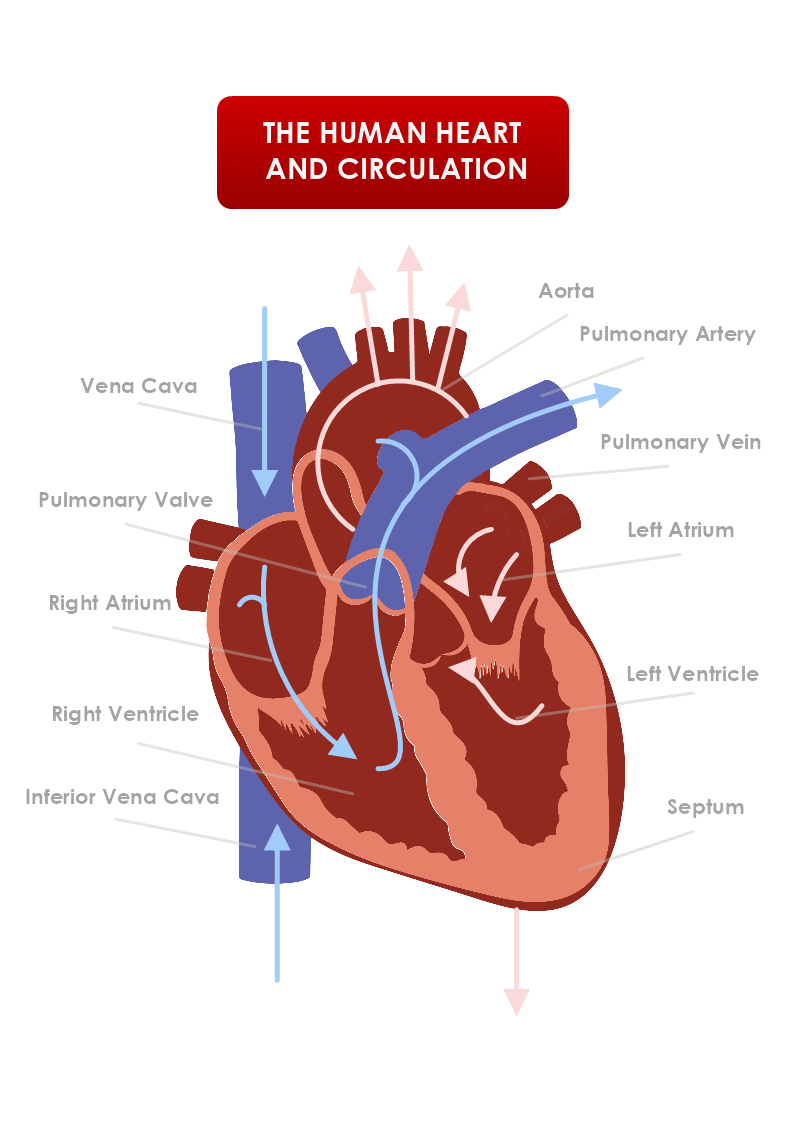This is a Human Heart and Circulation template that can be used by Medical students to save time and benefit the learning process. The template is customizable with a few drags and drops in MyDraw.
Download Template:


Download Template:



How does blood travel through the heart?
The circulatory system is formed by the beating of the heart which then pumps blood through a system of blood vessels. These vessels are elastic tubes that carry blood to every part of the human body.
Blood vessels carry fresh oxygen from the lungs and nutrients to our body's tissues. However, it also takes the body's waste products, including carbon dioxide, away from the tissues. This action is needed to sustain life and promote the health of all the human body's tissues.
7 Interesting facts about the circulatory system
The system of blood vessels that include arteries, veins, and capillaries is over 60,000 miles long.
The heart has 4 heart valves- mitral, tricuspid, aortic, and pulmonic valves.
The heart beats around 50 to 99 times a minute.
The beating of the heart can reach up to 100 beats per minute, due to external and internal factors (exercise, medication, fever, emotion, etc.).
Blood flows continuously through your our body's blood vessels.
Heartbeats (expands and contracts) 100,000 times per day, pumping 5 or 6 quarts of blood each minute, or about 2,000 gallons per day.
The right and left sides of the heart work together.
How to create a custom shape for the Human Heart and Circulation template?
- You can create your shape in a vector program and import/ insert it as a vector or raster image. The other option is to use MyDraw’s Basic shapes and connectors and make your custom shape.
- Once you are happy with the custom shape you could include it in your Library.
- Click on the textbook icon on the left side of the bar and choose “New Library”. Name the library and drag and drop the shape in it.
- Then right-click with the mouse on the Library tab and choose “Save as”.
- Choose the folder location on your computer and save it as a .nlb file.
- For future use, you could always add the newly created library to other diagrams.
-
You can also use one of the shapes from Healthcare
- Once you have created your diagram/ template you can save the document in one of MyDraw’s native formats or export it in a preferred file format(PDF, SVG, EMF, VSDX, etc.).
- You can also export the document as a raster image.
